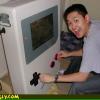Weakest Link In Engine?
Announcements
-
Similar Content
-
Latest Posts
-
By joshuaho96 · Posted
Take the fuel pump out of the hanger, purge the fuel tank of gasoline, try cleaning it with a soaking of this sodium acetate and dish soap solution. If there's no rust holes this should get the tank and hanger clean. -
cool update imho..... so in reality it makes 20-24psi at around 3000-3100rpm. It's far quicker on the street than it ever was previously. More updates soon, will be getting a new laptop soon and so will have some actual data for you all, cheers legends.
-
By Dose Pipe Sutututu · Posted
this, hence the comment about shipping the dB meter lol. @Kinkstaah do you have a Google Pixel 9 Pro XL by any chance? lol -
By GabsReDeal · Posted
That would really suck. I'll have to check that out as well. The older injectors did get clogged before changing the filter, but having them switched would obviously peed up the process greatly.
-








Recommended Posts
Create an account or sign in to comment
You need to be a member in order to leave a comment
Create an account
Sign up for a new account in our community. It's easy!
Register a new accountSign in
Already have an account? Sign in here.
Sign In Now